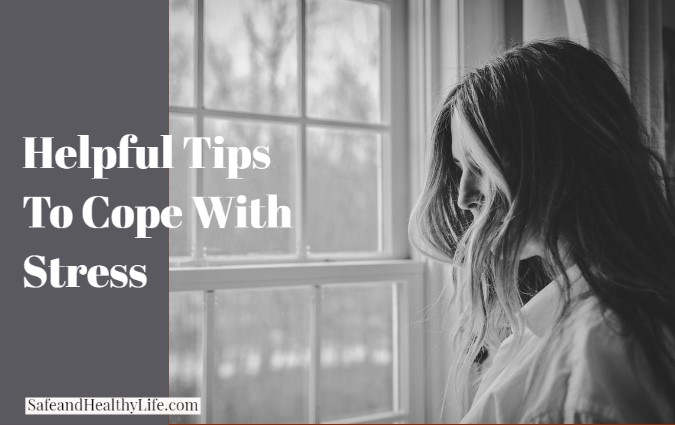
Have you ever experienced a slow acceptance of the pressures around you, until everything is “just too much” and you can barely cope?
Well, you’re not alone. The study finds that about 8.3 million American adults were reported to have experienced serious psychological distress.
According to the World Health Organization’s definition, occupational or work-related psychosocial stress “is the response people may have when presented with work demands and pressures that are not matched to their knowledge and abilities and which challenge their ability to cope”.
But the effects of workplace stress aren’t simply isolated to the workplace; they spill over into our personal relationships, our home lives, and our overall productivity. Related.
It’s true that you might not be able to remove all the stressful things from your life. But you can change how you respond to them. We can all benefit from identifying our stress and managing it better.
That’s what stress management is all about. People can learn to manage stress and lead happier healthier lives.
Stress has become one of the most serious health issues of the 21st century and a worldwide epidemic,” so it’s time to start growing our tools in handling stress (“Workplace Stress,” 2018). Here are some tips to help you keep stress at bay.
1. Breathing Techniques For Stress Relief
Take a deep breath in and let it out. You will notice a difference in how you feel. Your breath is a powerful tool to ease stress and make you feel less anxious. Some simple breathing exercises can make a big difference if you make them part of your regular routine.

Photo by Spencer Selover from Pexels
Before you get started, choose a place for your breathing exercise that is comfortable for you. Don’t force it. This can make you feel more stressed.
Try to do it at the same time once or twice a day. Wear comfortable clothes. Breathing exercises may only take a few minutes. But doing this for 10 minutes or more will give you greater benefits. There are several breathing techniques that you may choose from.
a. Deep Breathing
Taking short, shallow breaths into your chest can make you feel anxious and will zap your energy. Learn to take bigger breaths. Breathe in through your nose and fill your belly with air. Feel your belly rise. Breathe out through your nose and feel your belly lower. You may do this three times.
b. Breath Focus
While you do deep breathing, picture out in your mind a word or phrase to help you feel more relaxed. As you take a few big, deep breaths, imagine that the air is filled with a sense of peace and calm.
Feel it throughout your body. As you breathe out, imagine that you breathe out stress and tension. You may do this for 10 to 20 minutes.
c. Equal Time for Breathing in and Breathing Out
In this exercise, you’ll match how long you breathe in with how long you breathe out. Breathe in through your nose, count to five. Breathe out through your nose to the count of five. Repeat several times. You can work it out to increase your breathing exercise overtime.
d. Progressive Muscle Relaxation
In this technique, you breathe in as you tense a muscle group and breathe out as you release it. Progressive muscle relaxation helps you relax physically and mentally. It is suggested that you do this technique lying down comfortably.
Take a few deep breaths to relax. Breathe in. Tense the muscles of your feet. Breathe out. Release the tension in your feet. Breathe in. Tense your calf muscles. Breathe out. Release the tension in your calves.
Work your way up to your body. Tense each muscle group. This includes your legs, belly, chest, fingers, arms, shoulders, neck, and face.
e. Modified Lion’s Breath
In this technique, imagine that you’re a lion. Let all of your breath out with a big, open mouth. Sit comfortably.
Breathe in through your nose. Fill your belly all the way up with air. When you can’t breathe in anymore, open your mouth as wide as you can. Breathe out with a “HA” sound. Repeat several times.
2. Aromatherapy
If you need improvement in health problems from anxiety to poor sleep, you may want to consider aromatherapy.

Photo by Priscilla Du Preez from Unsplash
This treatment uses extracts from plants called essential oils, by either breathing them through your nose or putting them on your skin. Some people put the oils on their skin when they get a massage or take a bath.
Essential oils are made from flower, herb, and tree parts, like bark, roots, peels, and petals. The cells that give a plant its fragrant smell are its “essence”.
When an essence is extracted from a plant, it becomes an essential oil. Lemon, chamomile, lavender, cedarwood, and bergamot are a few of the essential oils used regularly in aromatherapy.
Not all products made with plant essence are essential oils. True essential oils aren’t blended with other chemicals or fragrances. They’re made using a specific process that doesn’t change the chemistry of the plant.
How does Aromatherapy work?
Experts think aromatherapy activates areas in your nose called smell receptors, which send messages through your nervous system to your brain.
The oils may activate certain areas of your brain, like your limbic system, which plays a role in your emotions. They could also have an impact on your hypothalamus, which may respond to the oil by creating feel-good brain chemicals like serotonin.
What Is Aromatherapy Used For?
You shouldn’t use aromatherapy instead of your regular medical treatment. But for some conditions, research shows that aromatherapy can have health benefits. This may include the following:
- Ease stress, anxiety, and depression
- Boost feelings of relaxation
- Improve sleep
- Help improve the quality of life for people with long-term health problems like dementia
- Ease certain types of pain, including pain from kidney stones and osteoarthritis of the knee
- Fight bacteria when you put them on your skin
- Ease some of the side effects of cancer treatment, like nausea and pain
3. Stress Management

Photo by Andrea Piacquadio from Pexels
- Keep a positive attitude. Choose to look for the good in others and yourself.
- Accept the fact that there are events that you cannot control.
- Be assertive instead of aggressive. Assert your feelings, opinions, or beliefs instead of becoming angry, defensive, or passive.
- Learn and practice relaxation techniques; take some deep breaths or meditation, yoga, or tai-chi for stress management.
- Exercise regularly. Your body can fight stress better when it is fit. Related.
- Eat healthy, well-balanced meals.
- Set priorities. Focus on what’s important.
- Learn to manage your time more effectively. Set short-term goals you can reach.
- Set limits appropriately and learn to say no to requests that would create excessive stress in your life.
- Get organized. The disorder can make things confusing and hard to remember.
- Laugh! Look for the humor in your everyday life, or watch a funny video.
- Listen to music. Choose tunes that relax or revive you.
- Make time for hobbies, interests, and relaxation.
- Get enough rest and sleep. Your body needs time to recover from stressful events.
- Don’t rely on alcohol, drugs, or compulsive behaviors to reduce stress.
- Seek out social support. Spend enough time with those you enjoy.
- Seek professional assistance to learn healthy ways of dealing with the stress in your life.
Try cutting down the stress in your life. See how many you can check off in the next 30 days on your way to a better life. Remember, things don’t have to be perfect. Sometimes “good enough” is just fine.
About The Author:
Carla Smith is the founder of SafeandHealthyLife.com. Her main objective is to provide informative articles, reviews, and analysis of health & fitness topics to her readers that help them to make their life easier and happier. Connect with her on Twitter.




